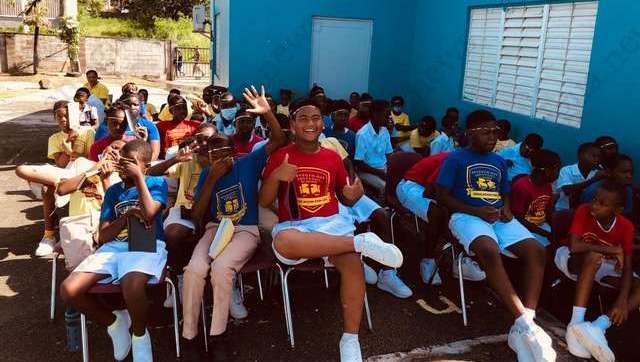
September is Cancer Awareness Month and while the deadly disease is a respecter of no man, the radar was placed on young children Wednesday.
Dr. Shivon Belle-Jarvis, the Head of the Pediatric Unit at the Sir Lester Bird Medical Centre (SLBMC) is no stranger to heartbrokenness felt when families lose children to cancer after having been close to a child who died recently from the ailment.
Perhaps this is why Dr. Belle-Jarvis is pleading with parents to ensure their children are screened regularly as they may have signs of cancer that are perhaps being ignored.
“If your child is having an unexplained fever for more than seven days, red flag. If your child is sweating at night, night sweats where the bed is drenched, red flag. Weight loss that you cannot explain is a red flag. Unusual lumps and bumps, they don’t have a cut anywhere but they have to swell under the armpits in the groin to the neck, a red flag. If they bruise easily, they barely rub against the table and have a big bruise on their arm, a red flag. Any of these are concerning,” she cautioned
Dr. Belle-Jarvis said many times, parents wait until their children are unwell before their general health is checked, a culture Dr. Belle-Jarvis said must be broken.
“We have a challenge here in Antigua and Barbuda where sometimes we only see our children when they are either coming in for vaccination or when they are ill. This culture needs to change. We need to see our children when they are well so that in the early days, we can detect something concerning,” Dr. Belle-Jarvis said.
Because it is generally not possible to prevent cancer in children, the most effective strategy to reduce the burden of cancer in children and improve outcomes is to focus on a prompt, correct diagnosis followed by effective, evidence-based therapy with tailored supportive care.
The most common types of childhood cancers include leukemias, brain cancers, lymphomas, and solid tumors and in Antigua and Barbuda, there is no registry so figures based on types cannot be properly ascertained.
There are very chilling statistics concerning childhood cancer as each year, according to the World Health Organization (WHO), an estimated 400,000 children and adolescents of 0-19 years old develop cancer.
The most common types of childhood cancers include leukemias, brain cancers, lymphomas and solid tumors, such as neuroblastoma and Wilms tumors.
In high-income countries, where comprehensive services are generally accessible, more than 80% of children with cancer are cured. In low- and middle-income countries (LMICs), less than 30% are cured.
Childhood cancer cannot generally be prevented or identified through the screening.
Most childhood cancers can be cured with generic medicines and other forms of treatment, including surgery and radiotherapy. Treatment of childhood cancer can be cost-effective in all income settings.
Residents in Antigua and Barbuda are asked to wear gold on Friday to support families here in Antigua and Barbuda who have children battling cancer.





0 Comments